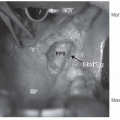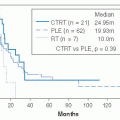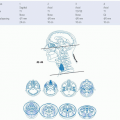Radiation Therapy Technique
William M. Mendenhall
The irradiation techniques employed for salivary gland tumors varies with the primary site, histology, and whether the patient is being treated with postoperative irradiation or definitive radiotherapy (RT). Surgery is the preferred initial step in essentially all patients, unless the tumor is incompletely resectable, resection that would be associated with an unacceptable cosmetic or functional deficit, the patient is medically inoperable, and/or the patient refuses surgery.
Patients with pleomorphic adenoma are treated with surgery alone, unless the margins are positive, and/or the tumor is recurrent, and is multifocal. Postoperative RT is unemployed in the latter circumstances; the dose-fractionation schedules are the same as those employed for carcinomas.1 Low-grade carcinomas, such as low-grade mucoepidermoid carcinomas, are usually treated with surgery alone. Postoperative RT is indicated for positive or close (<1-2 mm) margins. High-grade carcinomas are treated with surgery and postoperative RT. High-grade carcinomas include high-grade mucoepidermoid carcinomas, poorly differentiated adenocarcinomas, salivary duct carcinomas, carcinoma ex-pleomorphic adenomas, and lymphoepitheliomas.2 Patients with adenoid cystic carcinomas usually are treated with surgery and postoperative RT.3 An exception would be the patient with a grade I T1N0 lesion with widely negative margins. Patients with adenoid cystic carcinomas undergo magnetic resonance imaging
prior to surgery to detect gross perineural invasion. The regional lymph nodes are electively irradiated in patients with high-grade lesions and a clinically negative neck. The ipsilateral neck is irradiated for lateralized primary sites, such as the parotid. Both sides of the neck are treated if the lesion arises in a middle structure, such as the base of tongue.4
prior to surgery to detect gross perineural invasion. The regional lymph nodes are electively irradiated in patients with high-grade lesions and a clinically negative neck. The ipsilateral neck is irradiated for lateralized primary sites, such as the parotid. Both sides of the neck are treated if the lesion arises in a middle structure, such as the base of tongue.4
Stay updated, free articles. Join our Telegram channel

Full access? Get Clinical Tree








